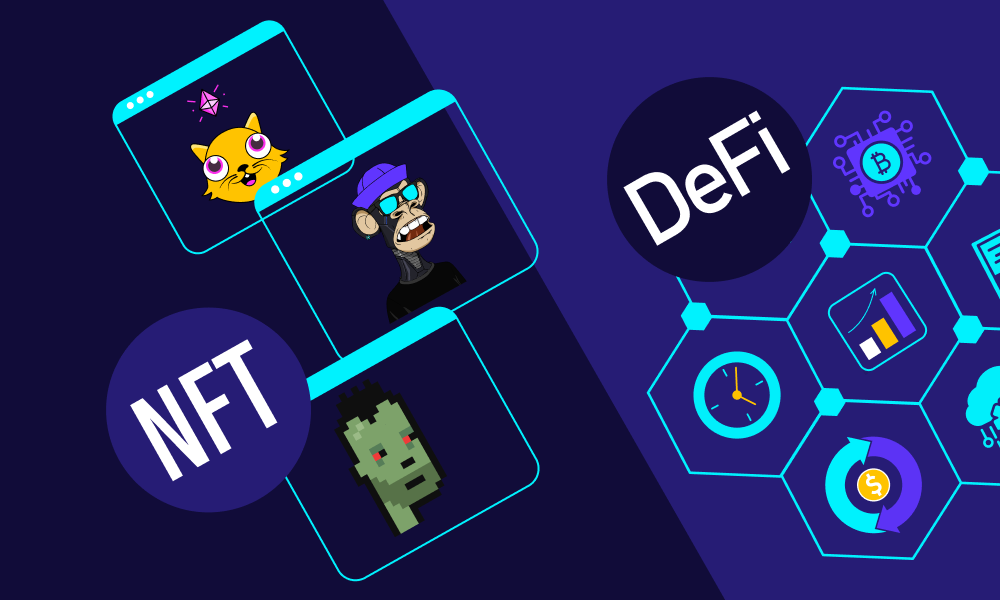Decentralized lending and borrowing – How it works and its benefits?

Decentralized lending and borrowing platforms function based on peer-to-peer (P2P) finance principles, facilitating direct lending or borrowing of cryptocurrencies without intermediaries such as banks or centralized institutions. These platforms utilize smart contracts on blockchain networks to enable automated and trustless execution of lending and borrowing arrangements. Lenders typically deposit their cryptocurrencies into a liquidity pool, which borrowers access by offering collateral, often in the form of other cryptocurrencies or non-fungible tokens (NFTs). The platform’s smart contracts manage the loan terms, including interest rates, collateralization ratios, and repayment schedules, guaranteeing transparency and immutability throughout the process.
How it works – A closer look
- Lenders – Individuals or entities with idle cryptocurrencies deposit their funds into a liquidity pool, earning interest on their deposits. The interest rates are typically determined by the supply and demand dynamics within the pool.
- Borrowers – Individuals seeking liquidity can access the pool by offering collateral, commonly in the form of alternative cryptocurrencies or NFTs. The collateral acts as a security deposit, ensuring that the borrowed funds are recovered in case of default.
- Smart contracts – At the heart of these platforms are self-executing smart contracts that govern the lending and borrowing processes. These contracts handle the terms of the loan, including interest rates, collateralization ratios, and repayment schedules, eliminating the need for intermediaries.
- Liquidation – If the value of the collateral falls below a predetermined threshold, known as the liquidation ratio, the smart contract automatically initiates a liquidation process. It involves selling a portion of the collateral to cover the outstanding loan amount and associated fees.
- Overcollateralization – To mitigate the risk of default, most decentralized lending platforms require borrowers to overcollateralize their loans, meaning the value of the collateral must exceed the borrowed amount by a certain margin.
Benefits of decentralized lending and borrowing
The decentralized nature of these lending and borrowing platforms offers numerous benefits over traditional centralized models, making them an attractive proposition for both lenders and borrowers.
- Accessibility and financial inclusion – Decentralized lending and borrowing platforms are open to anyone with an internet connection and a cryptocurrency wallet, regardless of their geographic location or credit history. This promotes financial inclusion by providing access to lending and borrowing services to individuals and businesses that may have been excluded from traditional finance.
- Transparency and immutability – All transactions and loan agreements are recorded on the blockchain, ensuring transparency and immutability. It eliminates the risk of fraud, manipulation, or censorship, as the records are publicly verifiable and tamper-proof.
- Efficient and borderless – These platforms operate on a global scale, enabling borderless lending and borrowing without the constraints of geographic boundaries or currency exchange restrictions. Transactions are processed quickly and efficiently, without the need for intermediaries or lengthy approval processes.
- Composability and innovation – The modular nature of DeFi protocols allows for composability, where different protocols and services can be combined to create innovative financial products and services. This fosters rapid innovation and enables the development of unique lending and borrowing solutions tailored to specific needs.
- Earning opportunities – Lenders earn attractive interest rates on their idle cryptocurrencies by contributing to liquidity pools. This creates new income streams and incentivizes participation in the DeFi ecosystem. For the info about best cryptocurrency visit retik.


 Customised Facilities Management Solutions: Tailoring Services to Meet Industry-Specific Needs
Customised Facilities Management Solutions: Tailoring Services to Meet Industry-Specific Needs  Professional photography company helps in marketing
Professional photography company helps in marketing  Top Training Courses to Boost Employee Performance in Australia
Top Training Courses to Boost Employee Performance in Australia  Need Seamless HR Integration? Find the Best Onboarding Software!
Need Seamless HR Integration? Find the Best Onboarding Software!  The Precision and Efficiency of the Ball Screw BLK by THK
The Precision and Efficiency of the Ball Screw BLK by THK  OP Service Korea: Providing Outstanding Services to the Suwon Community
OP Service Korea: Providing Outstanding Services to the Suwon Community